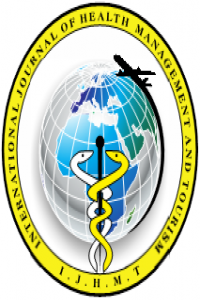Artificial Intelligence in Metabolomic Research
Artificial Intelligence in Metabolomic Research
metabolomics, artificial intelligence medicine, machine learning,
___
- Bertini I, Calabro A, De Carli V, Luchinat C, Nepi S, Porfirio B et al (2009). The metabonomic signature of celiac disease. J Proteome Res 8:170–177.
- Boozari M, Hosseinzadeh H. (2020). Natural products for COVID¬19 prevention and treatment regarding to previous coronavirus infections and novel studies. Phytotherapy Res. p. 1-13
- Bren L. (2005). Metabolomics: Working toward personalized medicine. FDA Consum, 39: 28-33.
- Dias-Audibert, F. L., Navarro, L. C., Oliveira, D. N., Melo, C. F. O. R., Guerreiro, T. M., Dabaja, M. Z., et al., (2019). Combining Machine Learning and Metabolomics to IdentifyWeight Gain Biomarkers. Campinas: IEEE Dataport.
- Giannakos, Michail & Voulgari, Iro & Papavlasopoulou, Sofia & Papamitsiou, Zacharoula & Yannakakis, Georgios. (2020). Games for Artificial Intelligence and Machine Learning Education: Review and Perspectives.
- Gordon DE, et al. (2020). A SARS-CoV-2 protein interaction map reveals targets for drug repurposing. Nature. 583(7816):459–68.
- Guan W, Zhou M, Hampton CY, Benigno BB, Walker LD, Gray A et al (2009). Ovarian cancer detection from metabolomic liquid chromatography/mass spectrometry data by support vector machines. BMC Bioinformatics 10:259.
- Guyon I, Weston J, Barnhill S et al (2002). Gene selection for cancer classification using support vector machines. Mach Learn 46:389–422.
- Gysi DM, Í Do V, Zitnik M, Ameli A, Gan X, Varol O, Ghiassian SD, Patten JJ, Davey R, Loscalzo J, Barabási AL. (2020). Network medicine framework for identifying drug repurposing opportunities for COVID-19.
- Heinemann J, Mazurie A, Tokmina-Lukaszewska M, Beilman GJ, Bothner B et al., (2014). Application of support vector machinesto metabolomics experiments with limited replicates. Metabolomics 10:1121–1128.
- Jacobs DM, Smolders L, Lin Y, de Roo N, Trautwein EA, van Duynhoven J, Mensink RP, Plat J and Mihaleva VV (2017) Effect of Theobromine Consumption on Serum Lipoprotein Profiles in Apparently Healthy Humans with Low HDL-Cholesterol Concentrations. Front. Mol. Biosci. 4:59. doi: 10.3389/fmolb.2017.00059
- Jang, C., Chen, L., and Rabinowitz, J.D. (2018). Metabolomics and isotope tracing. Cell 173, 822–837.
- Lander ES, Linton LM, Birren B, Nusbaum C, Zody MC, Baldwin J, Funke R. (2001). Initial sequencing and analysis of the human genome. Nature, 409(6822), 860-921.
- Laponogov, I., Gonzalez, G., Shepherd, M., Qureshi, A., Veselkov, D., Charkoftaki, G., ... & Veselkov, K. (2021). Network machine learning maps phytochemically rich “Hyperfoods” to fight COVID-19. Human genomics, 15(1), 1-11.
- Lent-Schochet, D., McLaughlin, M., Ramakrishnan, N., and Jialal, I. (2019). Exploratory metabolomics of metabolic syndrome: a status report. World J. Diabetes 10:23.
- Lin J. M. G., Kourtis S., Ghose, R., Lorente N.P., Kubicek, S., Sdelci, S. (2022). Metabolic Modulation of Transcription: The Role of One-Carbon Metabolism, Cell Chemical Biology, Volume 29, Issue 12, P1664-1679
- Lin X,Wang Q, Yin P, Tang L, Tan Y, Li., (2011). A method for handling metabonomics data from liquid chromatography/mass spectrometry: combinational use of support vector machine recursive feature elimination, genetic algorithm and random forest for feature selection. Metabolomics 7(4):549–558.
- Paul, D., Sanap, G., Shenoy, S., Kalyane, D., Kalia, K., & Tekade, R. K. (2021). Artificial intelligence in drug discovery and development. Drug Discovery Today, 26(1), 80–93.
- Sahu, A., Bla¨ tke, M.A., Szyma nski, J.J., and Topfer, N. (2021). Advances in flux balance analysis by integrating machine learning and mechanism-based models. Comput. Struct. Biotechnol. J. 19, 4626–4640.
- Salman, Ünver S., and Aksan, Kurnaz I. Ed. (2019). Adım Adım Biyogirişimcilik: Biyoteknoloji Girişimci ve Yatırımcılarına Yol Haritası. İstanbul: ABA Yayınları.
- Smith C, O’Maille G, Want EJ, Qin C, Trauger S, Brandon TR et al (2005). METLIN: a metabolomike mass spectral database. Ther Drug Monit 27(6):747–751
- Tautenhahn R, Bo¨ttcher C, Neumann S et al (2008). Highly sensitive feature detection for high resolution LC/MS. BMC Bioinformatics 9:504.
- Vázquez-Calvo, Á.; De Oya, N.J.; Martín-Acebes, M.A.; Garcia-Moruno, E.; Saiz, J.-C. (2017). Antiviral Properties of the Natural Polyphenols Delphinidin and Epigallocatechin Gallate against the Flaviviruses West Nile Virus, Zika Virus, and Dengue Virus. Front. Microbiol. 8, 1314.
- VeselKov KA, Vingara LK, Masson P, Robinette SL, Want E, Li JV et al., (2011). Optimizing preprocessing of ultraperformance liquid chromatography/mass spectrometry urinary metabolic profiles for improved information recovery. Anal Chem 83:5864–5872.
- Xian Y, et al. (2020). Bioactive natural compounds against human coronaviruses: a review and perspective. Acta Pharm Sin B. 10(7):1163–74.
- Xin Fang, Colton J. Lloyd & Bernhard O. Palsson, (2020). Reconstructing organisms in silico: genome-scale models and their emerging applications, Nature Reviews Microbiology.
- Yanes O, Tautenhahn R, Patti GJ, Siuzdak G et al (2011). Expanding coverage of the metabolome for global metabolomike profiling. Anal Chem 83(6):2152–2161.
- Zhavoronkov A, Ivanenkov YA, Aliper A, Veselov MS, Aladinskiy VA, Aladinskaya AV, Terentiev VA, Polykovskiy DA, Kuznetsov MD, Asadulaev A, Volkov Y, Zholus A, Shayakhmetov RR, Zhebrak A, Minaeva LI,
- Zagribelnyy BA, Lee LH, Soll R, Madge D, Xing L, Guo T, Aspuru-Guzik A., (2019). Deep learning enables rapid identification of potent DDR1 kinase inhibitors. Nat Biotechnol. Sep;37(9):1038-1040.
- Yayın Aralığı: Yılda 3 Sayı
- Başlangıç: 2016
- Yayıncı: Dilaver TENGİLİMOĞLU
Perceptions of Patient Safety Culture of Dentistry Students and Dentists in a Faculty of Dentistry
Ayşe Kübra DEMİR, Hatice ULUSOY
Altuğ ÇAĞATAY, Ali TOPAL, Ümit ARSLAN
Derya GÜNDÜZ HOŞGÖR, Hacer GÜNGÖRDÜ, Haydar HOŞGÖR
Artificial Intelligence in Metabolomic Research
Hanifi KEBİROĞLU, Hande HAYKIR
The Effect Of Talent Management On Nurses' Perceptions Of Work Motivation And Organizational Trust
